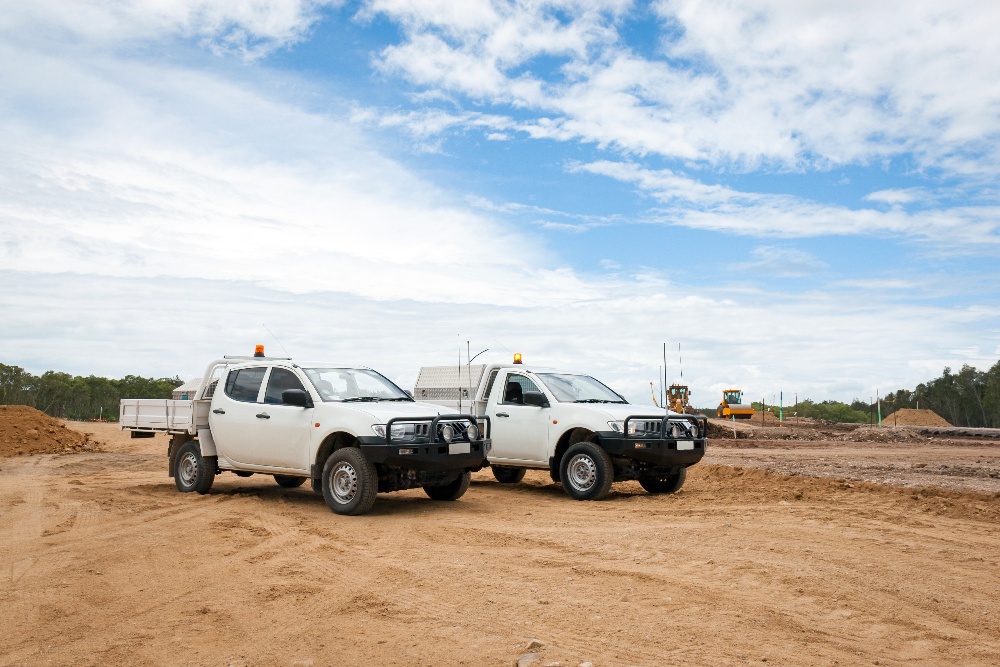A stolen vehicle is every fleet manager’s worst nightmare. You don’t just lose the vehicle and its contents. You end up wasting valuable time making insurance claims and dealing with the authorities—not to mention all that downtime and lost revenue due to lost capacity. In some cases, you could even tarnish your reputation.
You can’t predict the future and incidents will occur. The difference between a theft being a minor hiccup and a total catastrophe is how you handle the situation.
When stress is sky-high, decisions tend to be rushed. That’s why proactive managers have a fleet and asset theft plan in place—so if something does go wrong, they have a framework to help them get things back on track fast. Here’s how to create an asset theft plan that will keep your business moving.

1. Keep an Inventory
When there’s a theft, you’ll need to report what’s missing to the customer and your insurance company. Keeping relevant paperwork handy is a good first step, but it’s important to keep track of all your assets in up-to-date digital files as well.
Storing serial numbers, receipts, and manufacturers’ information digitally means you can easily identify missing items without having to work your way through mountains of paperwork. It also means that if something is stolen, you’ll have digital proof-of-purchase ready in case you need to file a claim.
In addition to keeping a digital list, you should take pictures and videos of your assets, and create backups and store these in secure off-site and onsite locations on separate hard drives. This protects you in the event of a cyberattack.
2. Install GPS Tracking Devices
Stolen vehicles are big business in the Australia. According to the National Motor Vehicle Theft Reduction Council, they cost companies over $500 million in 2016 alone. Not only that, but 28% of vehicles are never recovered.
The best way to recover stolen assets? Install GPS tracking devices on every vehicle, cab, trailer, and piece of equipment.
GPS fleet tracking software can help you locate your vehicles in real time. This invaluable information makes recovery far more likely—not to mention much faster. You can also record where and when the vehicle stops on its journey, helping the authorities conduct a thorough investigation and potentially recover cargo that’s been dropped off along the way.
Although rare, you could face a situation where one of your drivers steals a vehicle. In this scenario, you can use the GPS software to see which key was used to start the ignition, then pass this valuable information to the authorities.
3. Maintain Open Communication
Having a communication plan in place means both you and your team will know exactly what to do in an emergency.
Good communication practices include:
- Make sure your drivers know exactly whom to speak to in the event of a theft—whether they are an eyewitness or the first to discover it. “If you see something suspicious, know who to call and what to do,” advises Geoff Stephany, director of cargo claims and security for Old Dominion Freight Line.
- Make sure your drivers know how to record missing supplies, including filling out the necessary paperwork.
- Talk to your customers about theft and make sure you have someone to contact on their side in an emergency. This keeps your relationship transparent and positive, even when things go wrong.
- Empower employees to take ownership of an incident—from reporting to being honest about whether it happened on their watch. Let them know they won’t be penalised, because every bit of information they can provide will help you locate stolen assets. If the driver is at fault, you can use the incident as an opportunity to provide further training to ensure it doesn’t happen again.
4. Set Up Alerts to Detect Unauthorised Vehicle Movement
A geofence is a virtual barrier defined by you. Most vehicles follow set routes. Therefore, if a vehicle leaves a certain geofence, your tracking software can transmit an automatic notification. This means you will also be able to act before your vehicle is even reported stolen.
With Fleet Complete, the system can detect any unauthorised movement from vehicles that are headed to a no-go area. The fleet manager can then either get in contact with the driver to find out what’s going on or go straight to law enforcement.
5. Share Tracking Data Immediately
Theft is never easy; this is why good, speedy communication between all relevant parties can alleviate tensions and make the recovery process smoother.
“Contact your insurance company to file a claim within 24 hours of your vehicle being stolen,” advises The National Highway Traffic Safety Administration.
You should also report thefts and share time-sensitive information with law enforcement as soon as possible. This shows you’re taking the event seriously and doing everything you can to remedy a bad situation.
6. Commit to Your Plan
As Benjamin Franklin once said, “By failing to prepare, you’re preparing to fail.” By anticipating problems and looking ahead, you’re doing your due diligence as a fleet manager—which reflects well on you.
Having a fleet and asset theft plan in place allows you to confidently make decisions about your business in the event of an emergency. This is why it’s worth investing in technology that helps you respond quickly and easily before too much damage is done.
With Fleet Complete Fleet Tracker and Asset Tracker solutions, you can digitally manage your inventory, set up geofencing, and track your assets in real-time. If you want to protect your business operations against theft and wrongdoing, learn more by requesting our Fleet Complete demo.




















































































